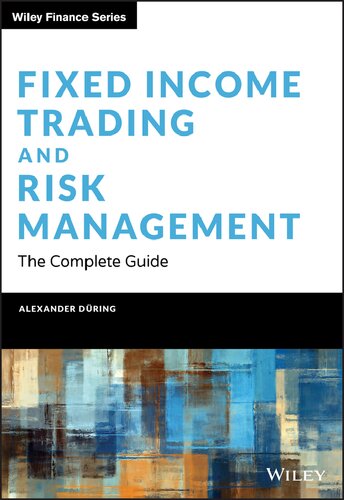This book deals with the fixed income markets and the best point to start is to define what this means. The book will follow market usage by defining fixed income instru- ments as contracts that specify payment obligations that are not linked to the economic situation of the obligor. It also excludes from the scope contracts that establish payments depending on the performance of physical assets, such as commodities or weather. The book will further discuss a range of fixed income derivatives, namely contracts that spec- ify obligations that depend on the performance of fixed income instruments. Fixed income instruments can be broadly divided in to bilateral contracts and secu- rities. Securities differ from bilateral contracts in that they are transferrable without the consent of all parties. Note that some features of securities may be linked to bilateral contracts. Table 1.1 lists various fixed income instruments in these two categories. In German, fixed income instruments are referred to as ‘Renten’ and the same word is also used to refer to pensions. In the English vernacular, the scope of the word ‘rent’ to signify income streams has been narrowed down significantly to refer to payments linked to the use of physical assets. The Latin translation of the word ‘rent’, ‘pension’, is now used in English to designate the income stream that accrues to people after a life- time of work. On the other hand, ‘Pension’ in financial German refers to the renting out of financial assets1 . This etymological divergence between otherwise related languages highlights an important point, namely that the notion of fixed income instruments is not new but underwent several changes of connotation over time
چکیده فارسی
این کتاب به بازارهای با درآمد ثابت می پردازد و بهترین نکته برای شروع این است که معنی آن را تعریف کنید. این کتاب با تعریف ابزارهای درآمد ثابت بهعنوان قراردادهایی که تعهدات پرداختی را که به وضعیت اقتصادی متعهد مرتبط نیستند، مشخص میکند، کاربرد بازار را دنبال میکند. همچنین قراردادهایی را که بسته به عملکرد داراییهای فیزیکی، مانند کالاها یا آب و هوا، پرداخت میکنند، از محدوده خارج میکند. این کتاب بیشتر در مورد طیفی از مشتقات با درآمد ثابت بحث خواهد کرد، یعنی قراردادهایی که تعهداتی را مشخص می کنند که به عملکرد ابزارهای با درآمد ثابت بستگی دارد. ابزارهای درآمد ثابت را می توان به طور کلی به قراردادهای دوجانبه و اوراق بهادار تقسیم کرد. تفاوت اوراق بهادار با قراردادهای دوجانبه این است که بدون رضایت همه طرفین قابل انتقال هستند. توجه داشته باشید که برخی از ویژگی های اوراق بهادار ممکن است به قراردادهای دوجانبه مرتبط باشد. جدول 1.1 ابزارهای مختلف درآمد ثابت را در این دو دسته فهرست می کند. در آلمانی به ابزارهای با درآمد ثابت «Renten» گفته میشود و از همین کلمه برای اشاره به حقوق بازنشستگی نیز استفاده میشود. در زبان عامیانه انگلیسی، دامنه کلمه "اجاره" برای نشان دادن جریان های درآمد به طور قابل توجهی محدود شده است تا به پرداخت های مرتبط با استفاده از دارایی های فیزیکی اشاره کند. ترجمه لاتین کلمه «اجاره»، «بازنشستگی»، اکنون در انگلیسی برای تعیین جریان درآمدی که پس از یک عمر کار به افراد تعلق میگیرد، استفاده میشود. از سوی دیگر، "بازنشستگی" در آلمانی مالی به اجاره دادن دارایی های مالی اشاره دارد. این واگرایی ریشهشناختی بین زبانهای مرتبط دیگر نکته مهمی را برجسته میکند، یعنی اینکه مفهوم ابزارهای درآمد ثابت جدید نیست، اما در طول زمان دستخوش چندین تغییر معنا شده است
ادامه ...
بستن ...
Author(s): Alexander Düring
Series: Wiley Finance
Publisher: Wiley, Year: 2021
ISBN: 1119756332,9781119756330
ادامه ...
بستن ...










